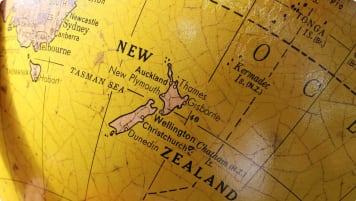The London Underground
London's underground railway network. Article foe senior couples and mature solo travellers joining a small group tour interested in learning about Victorian London and the evolution of the Tube network in the Industrial revolution.
4 Oct 21 · 8 mins read
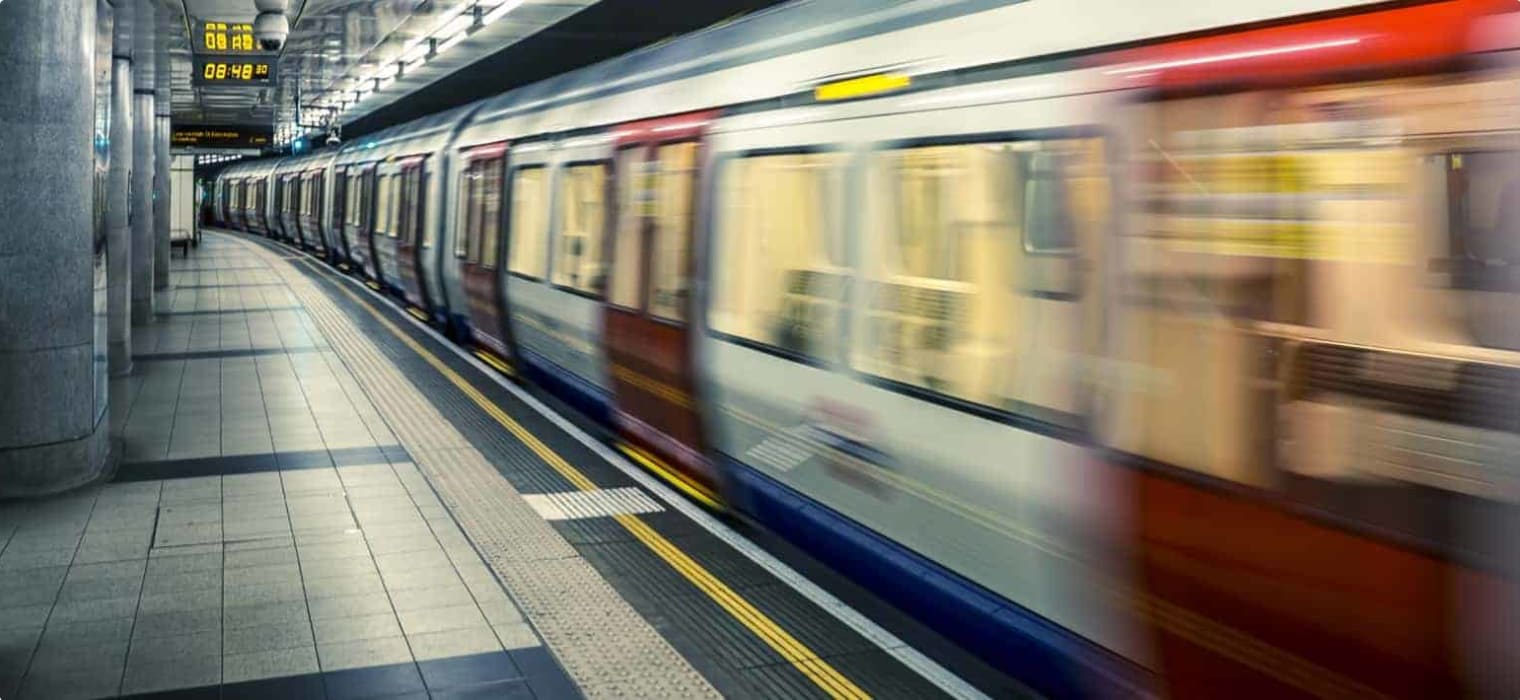
The London Underground
Beneath London is another London, a shadowy counterpart still not mapped in its entirety, but in many ways similar to the London above the ground. According to Peter Ackroyd in London Under (Vintage, 2012), “It was said of the Victorian Londoner, wrapped in fog and darkness, that he or she would not know the difference between the two worlds”. Beneath Piccadilly Circus, for example, is an underground station also called Piccadilly Circus, and the roads “that converge…on Islington, have their counterparts beneath the surface” (p.2). London’s extensive subterranean transport system snakes 400 kilometres long beneath the ground, and in this post we will explore its history, and see what’s in store for the world’s oldest underground railway system.
Building the Railways
London is based upon clay formed more than fifty million years ago (Ackroyd, 2012, p.9). In the year 43, it was the Roman settlement of Londinium. The Romans’ bridge over the River Thames turned the city into a major commercial centre in Roman Britain until the 5th century, and the defensive London Wall defined the city borders for centuries.
London’s ancient past continue to appear in the modern metropolis. Though dismantled in the 1700s, sections of the London Wall remain visible, snaking through private and public establishments in the city, and archaeologists continue to find skeletons dating back to Roman times.
Save for a period after the collapse of Roman rule and the era of numerous Viking raids, London has always been a busy, bustling city. Around the 1800s, with the advent of the Industrial Revolution marked by mass migration from the countryside to urban areas, London was already feeling the weight of its increasing population. The city’s population exploded to more than six million people in the 19th century. Roads were congested with horse-drawn omnibuses and carriages (p. 113), and even the Thames became overcrowded, causing damage to merchandise as the transport of goods across the river got delayed.
Charles Pearson, solicitor to the City of London, first proposed the idea of an underground railway system in the 1830s to ease above-ground congestion, envisioning a route that connected King’s Cross with Farringdon Street. The plan was met with derision, driven by fears of the underground turning into a refuge for Fenians (members of the Irish Republican Brotherhood) who might blow up the city (p. 113).
Thames Tunnel
Years before Pearson’s proposal, Marc Isambard Brunel, a French naval officer who settled in England, designed and patented the tunnelling shield, a machine for driving tunnels in soft ground, which could be used to bore tunnels under rivers. Brunel’s invention became an important tool of modern civil engineering.
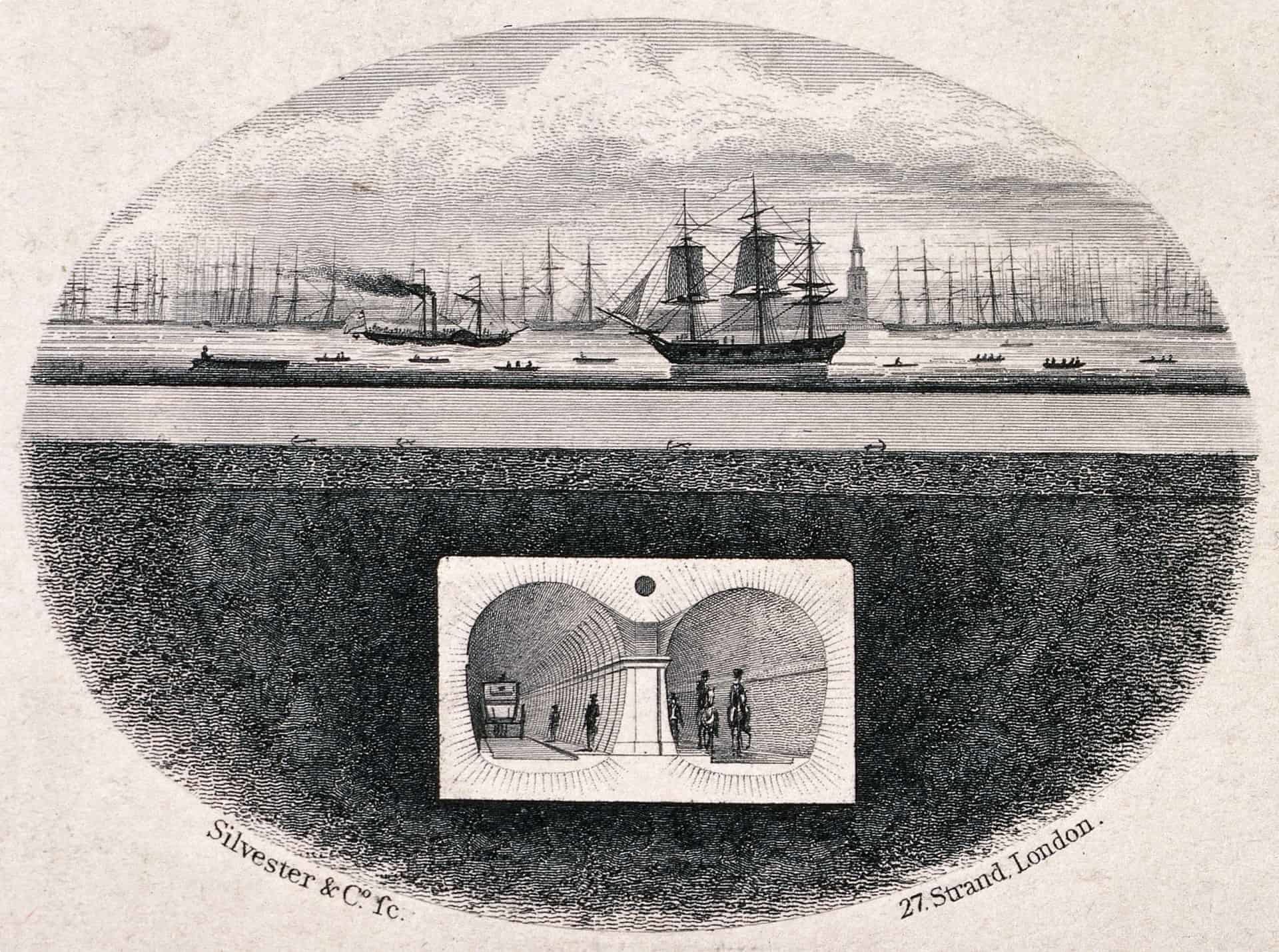
His most famous achievement was the construction of the Thames Tunnel, built with the help of his son (and later famous English engineer) Isambard Kingdom Brunel. The Thames Tunnel, opened in 1843, was the world’s first tunnel built beneath a river. It was originally planned to convey cargo and ease the congestion on the Thames, but lack of sufficient funding and accidents turned it into a pedestrian attraction, welcoming 50,000 curious visitors on the first day. A successful attraction for sure, but a structure not fulfilling its intended purpose.
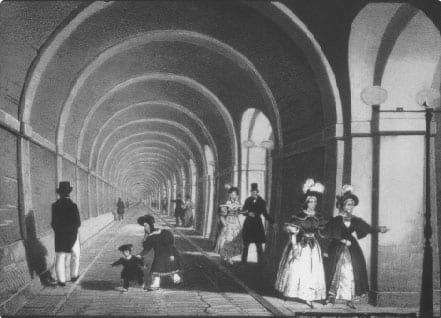
According to Matthew Wills, Nathaniel Hawthorne went through the tunnel in 1855 and imagined it “choked up with mud, its precise locality unknown, and nothing…left of it but an obscure tradition.” Pearson’s detractors believed an underground railway would just have the same fate as the Thames Tunnel.
The Met
But Pearson persisted, and though work on the railway was delayed by funding concerns and the Crimean War, construction finally began in 1860 using the conventional “cut-and-cover” method–that is, excavating trenches, building the structure, and covering it back up. The resulting Metropolitan Underground Railway (or the Met) opened on January 10, 1863.
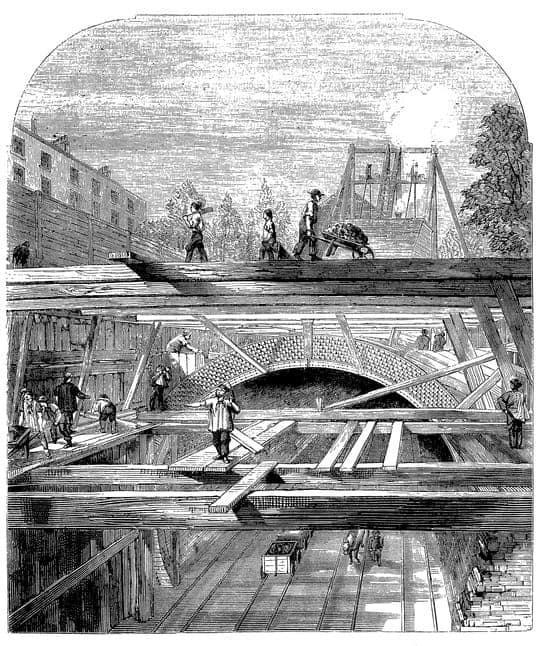
As steam locomotives were used to haul the wooden carriages on the line, the tunnel quickly filled with sulphurous fumes. This, however, did not stop passengers from taking the subterranean trains between Paddington (then called Bishop’s Road) and Farringdon Street, attracted by the spectacle of riding the first-ever underground railway in the world.
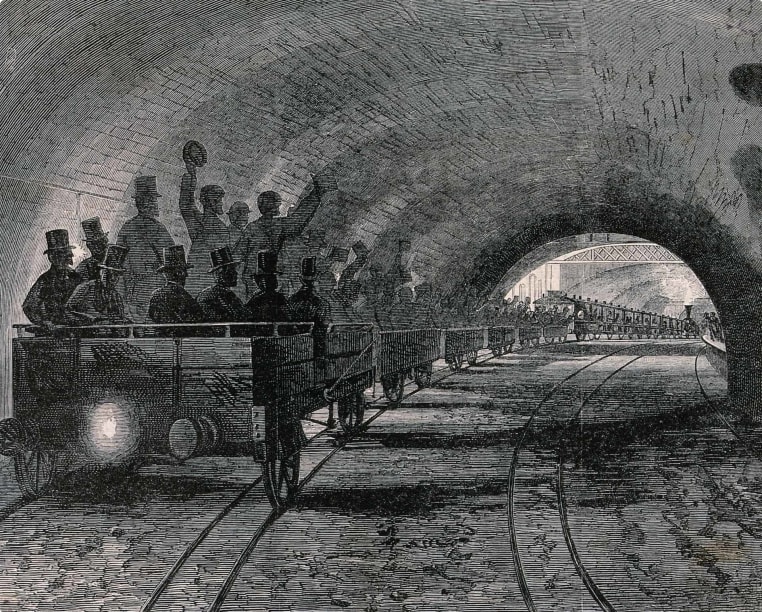
The Met carried nearly 10 million passengers in its first year and 12 million in its second year–a roaring success. It would be greatly extended in the following years, branching out to other lines and giving birth to the “Tube”, or the London Underground network.
Deeper Underground
Money from tourists visiting the Thames Tunnel helped continue its development, and in 1869, the first cargo steam train travelled beneath the River Thames, ensuring that Hawthorne’s fears of a forgotten and unused tunnel “choked up with mud” would not come to pass.
The Met’s success led to other railway companies petitioning Parliament for licenses to build new underground railways. The original line was expanded on either end and reached Hammersmith (1864), Richmond (1877), and closed a loop called the Inner Circle line in central London (1884), the Met connecting the rails with a rival company, the District Railway Company. The Inner Circle line became very busy, with over 800 trains running around all or part of the line every day.
The railways made the city feel smaller, with every spot accessible, allowing lower-middle-class professionals to continue living in the safe but relatively inexpensive (at least compared to central London) suburbs and still work in the city. At times, the train itself caused the suburbs to form on its path (nicknamed the “Metroland” suburbs), as what happened in the Middlesex countryside when the Met railway made its way through there from a branch at Baker Street. Train tracks even made it as far as Verney Junction, more than 80 kilometres from central London.

These railways were built using the “cut and cover” method, but a new tunnelling shield developed by J.H. Greathead allowed construction to go deeper. In 1866, the City of London and Southwark Subway Company (later called the City and South London Railway) began work on tunnels deep beneath the earth, which allowed them to work without snarling traffic and interfering with building foundations. The tunnels ran from King William Street to Stockwell in South London (Ackroyd, 2012, p. 120) and became known as the Tube, a nickname used for the first time then and which had been used ever since.
Railways Go Electric
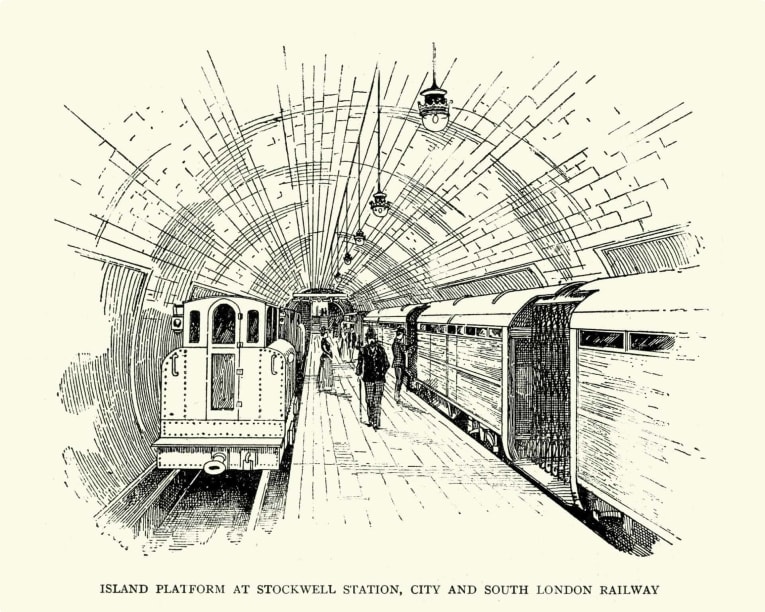
The deep-level line was opened to the public in 1890, and the trains that travelled here were the first to be powered by electricity, hence making the line the first underground electric railway in the world. The full journey from Stockwell to the city took only 18 minutes. As the trains no longer burned coal, there were no noxious fumes emitted, making travel more comfortable. What caused outrage was the fact that the line introduced no demarcation of classes. The older trains had three different classes, with tickets costing three, four and six pence for a single journey. Now on the Stockwell line every carriage looked the same, and tickets were simply charged a uniform fare of twopence. Ackroyd writes that “the Railway Times complained that lords and ladies would now be travelling with Billingsgate fishwives and Smithfield porters.”
In 1900, American railway magnate Charles Tyson Yerkes led the construction of more tubes and the electrification of the old lines. The use of electricity also accelerated development, as there would be no need for vents to let out smoke, and the trains could even travel on top of one another.
Yerkes formed the Underground Electric Railways Company of London Limited (UERL), which served as the holding company for the three tube lines opened in 1906 and 1907: the Baker Street and Waterloo Railway, the Charing Cross, Euston and Hampstead Railway, and the Great Northern, Piccadilly and Brompton Railway. It also served as the parent company of the District Railway, which UERL electrified between 1903 and 1905.
In 1908, the word “Underground” first appeared in Tube stations, accompanied by the now world-famous red-circle logo. Developments continued with the introduction of the first electric ticket machine (1908), first escalators (1911), and with air-operated doors replacing doors operated by hand (1929). During the two world wars, the Underground served as shelters (for both people and valuable items retrieved from the British Museum) from the bombings, and as mini-factories for munitions and war offices.
London’s Abandoned Tunnels
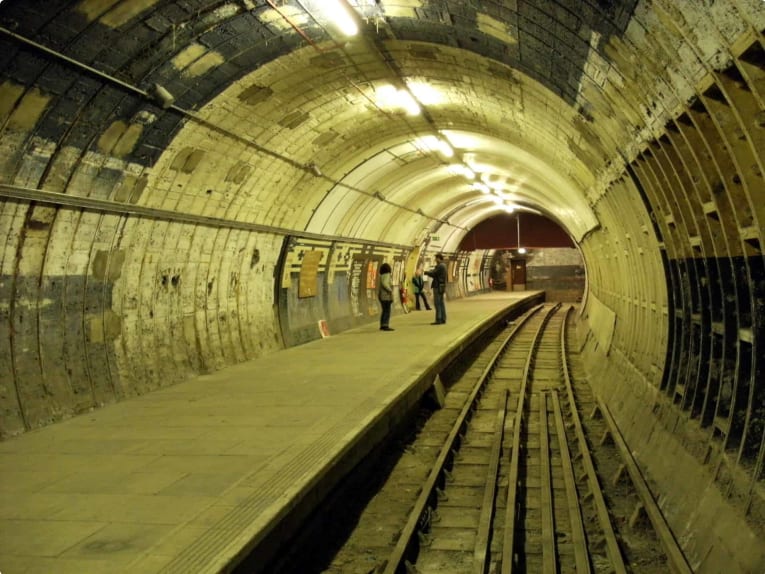
These rapid developments underground were marked by false starts, project pivots, and eventual abandonment and closures of many tube lines. Franklin Jarrier drew a map of these 49 “ghost stations”, including St. Mary’s station, which was bombed in World War II and closed in 1938; the reportedly unnecessary Brompton Road Underground station, closed in 1934; and York Road station, closed in 1932 due to low passenger volumes. Low passenger volumes also led to the closure of Blake Hall on the Central Line in 1981; when it closed it only served 17 passengers per day.
The London Transport Museum offers a guided tour called Hidden London, where experienced guides take interested visitors through London’s disused stations and secret sites. Stops include the abandoned spaces of Charing Cross Underground beneath Trafalgar Square, closed in 1999 and now used as film sets for blockbusters such as Skyfall, and the tunnels of Euston Station, which still had fragments of vintage advertising posters clinging to its walls, a gallery hidden for more than 50 years.
Another interesting stop is Down Street, a working station from 1907 to 1932, before it was converted into the Railway Executive Committee’s headquarters. This was where Prime Minister Winston Churchill took refuge at the height of the Blitz.
Modern Developments
The Underground was funded entirely by private companies until 1933, when the railways, tramways, buses and coaches were integrated into a quasi-public organisation, the London Passenger Transport Board, formed in response to the unregulated small bus operators plying the streets and affecting the profitability of the road transport network.
That same year, a map of the Underground designed by Harry Beck was distributed to the public. Before Beck, the maps of the Tubes were geographical in nature and difficult to read. Beck based his design on an electrical circuit, an elegant diagram that was easy on the eyes and which could be easily followed by passengers. You can see the the newest map of the Tubes here.
In 1948, London Transport was nationalised and placed under the British Transport Commission, and later directly below the Minister of Transport as the London Transport Board in 1962. The Underground saw the addition of a new line for the first time in half a century: the Victoria Line, opened in 1968.
Control of the railways was moved from central to local government in 1970, and the Jubilee Line was opened in 1979, named in honour of Queen Elizabeth II’s Silver Jubilee. In 2007, the London Underground, with a history of many firsts, reached another landmark: it was the first time that one billion passengers used it within just one year.
Today, the London Underground is run by Transport for London, a local government body, while projects to upgrade the lines are awarded to private companies. The next project to expand the Underground is the construction of the new “Elizabeth Line” (being built by Crossrail Limited), Europe’s biggest (and most expensive) underground construction project. The Elizabeth Line, the Tube’s first new line in 50 years, is envisioned to connect stations such as Paddington to Canary Wharf in only 17 minutes. It is expected to be fully operational by 2020.

If you want to learn more about the London Underground, do refer to Peter Ackroyd’s London Under, particularly the chapters “Darkness Visible” and “The Deep Lines”, which were used as references for this article. Other resources are linked throughout the post.
To know more about the railways of Britain, consider joining Odyssey Traveller’s Exploring Britain through its Canals and Railways tour where we visit the key sites associated with the history of the railway and canal systems. We travel from the midlands of England and North Wales, up the west coast to Scotland, before returning down the east coast to London. Our small group tours include an experienced guide to provide context and access to locations off the beaten track.
Odyssey Traveller also runs a tour focused on Britain and the Industrial Revolution, the Queen Victoria’s Great Britain tour. This 21-day small group program provides participants with talks and short lectures from a group of guides with expertise on Victorian Britain. The tour commences in London and concludes in Glasgow.
For more information on all of Odyssey Traveller’s tours to the British Isles, please click here.
Refreshed: 4th October 2021
Related Tours
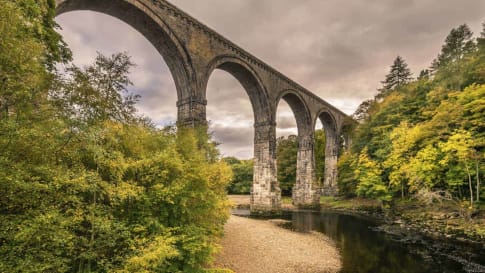
23 days
Oct, Apr, SepCanals and Railways in the Industrial Revolution Tour | Tours for Seniors in Britain
Visiting England, Scotland
A small group tour of Wales, Scotland & England that traces the history of the journey that is the Industrial revolution. Knowledgeable local guides and your tour leader share their history with you on this escorted tour including Glasgow, London, New Lanark & Manchester, Liverpool and the Lake district.
From A$17,860 AUD
View Tour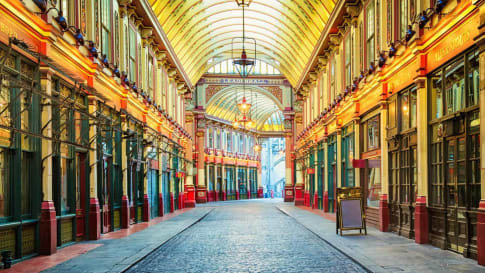
21 days
Sep, JunQueen Victoria's Great Britain: a small group tour
Visiting England, Scotland
A small group tour of England that explores the history of Victorian Britain. This escorted tour spends time knowledgeable local guides with travellers in key destinations in England and Scotland that shaped the British isles in this period including a collection of UNESCO world heritage locations.
From A$15,880 AUD
View Tour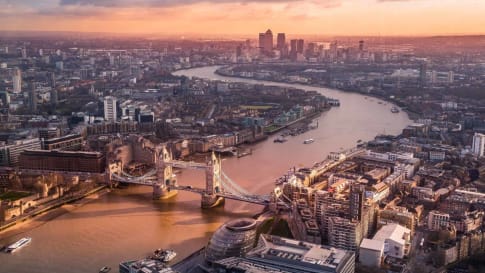
6 days
Apr, SepLondon Short Tour
Visiting England
A small group tour of London is a collection of day tours that visit and explore through the villages of the city. This escorted tour includes a journey out to Windsor castle. We explore Contemporary and learn about Roman Walled city, Medieval, Victorian London and the contemporary city today.
From A$6,995 AUD
View TourRelated Articles
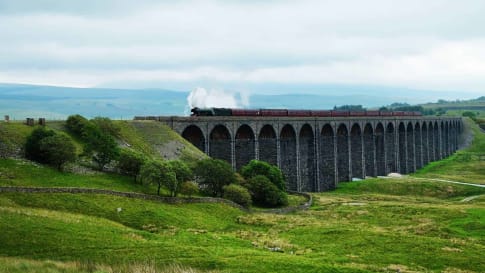
15 books on Britain's Industrial Revolution
Fifteen books on Britain’s Industrial revolution This reading list on Britain’s Industrial revolution complements Odyssey Travellers escorted small group tour that traces via the canal and railway network, the evolution of this monumental change in…
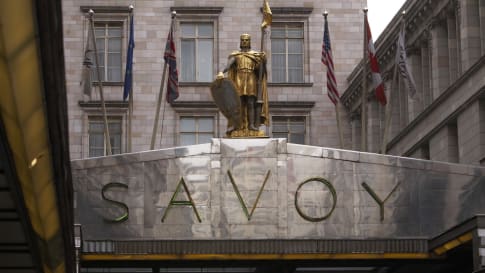
D'Oyly Carte's family
Great Britain has a history of influencers the D'Oyly Carte family is one of them. They shaped London, and the Gilbert and Sullivan history from Devon to Harrogate. Learn more with this article for a small group educational tour for senior couples and mature solo travellers.
England's Liverpool: Port City, Architecture Marvel
Article for educational small group tours about the Port City of Liverpool. An Architecture Marvel from Georgian times, built on trade, some good, some horrific. Read and learn more before joining a tour for senior couples and mature solo travellers interested in culture, learning and the arts.

Exploring Newcastle upon Tyne: The Definitive guide for Travellers
Newcastle upon Tyne is discussed in this article for senior couples and mature solo travellers on an educational small group tour. Learn about this English city and the Romans, Vikings, Middle ages and Victoria and the Industrial revolution.
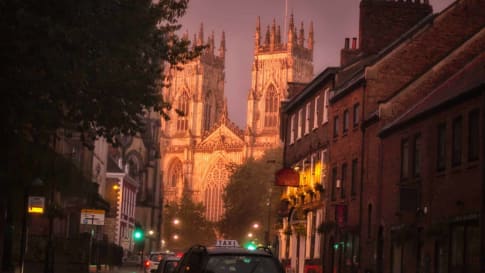
Exploring York
Article about York, England. Explored on a small group educational tour for senior couples and mature singles curious about history from the Romans, the Vikings and the industrial revolution. Including the famous York Minster a great cathedral!
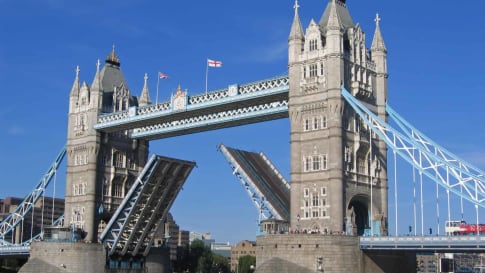
Highlights of London
Article about London, capital of England. Supporting educational small group tours for senior couples and mature solo travellers to those interested in English history, culture and landscapes. Article shares insights about London.

London's Victorian Architecture: The Definitive Guide for Travellers
Small group educational tours for senior couples and mature solo travelers with History tours including those examining the Industrial revolution, Victorian Britain the Gilbert and Sullivan era via the D'Oyle Carte family and the cities such as Glasgow, Liverpool and Manchester.

Markets of Victorian London
Article about the markets of London as part of a small group educational tour of England, Scotland and Wales as well as Europe. Collection of Articles about Victoria and her England including the industrial revolution for senior couples and mature solo travelers.
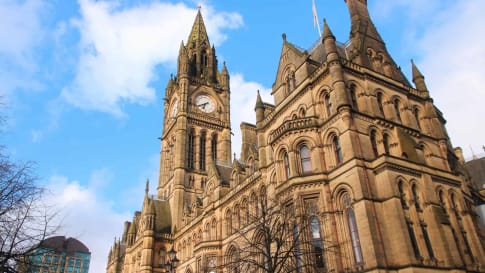
Bees in Manchester: a surprising symbol of the Industrial Revolution
Bees in Manchester: a surprising symbol of the Industrial Revolution The bee is an intriguing symbol for the city of Manchester. The city’s damp climate provided the ideal conditions for milling cotton. But this is…


